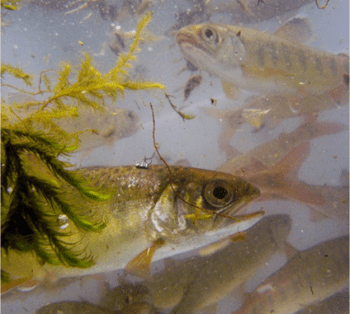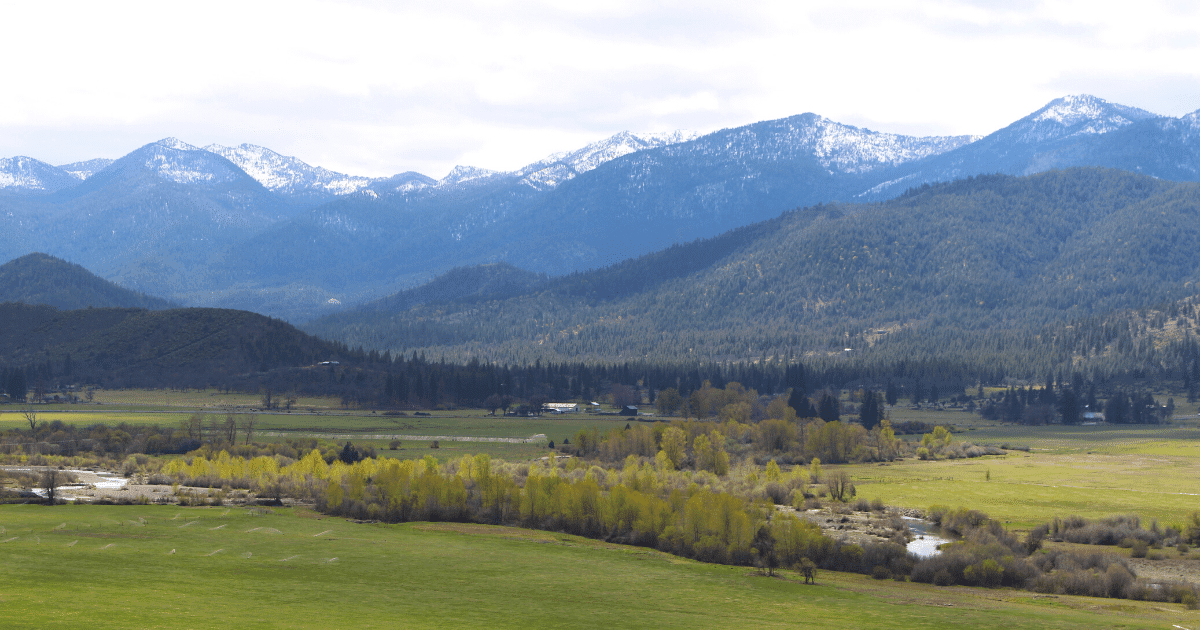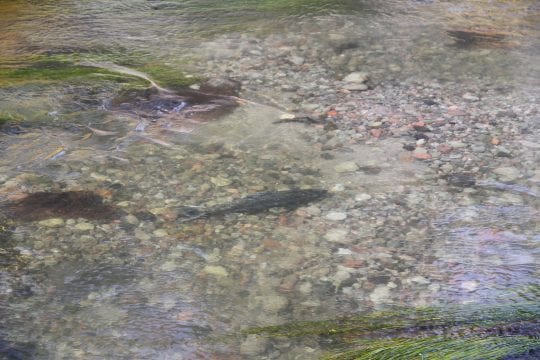Field Note: Ensuring Flows for Fish in the Shasta and Scott River
By Ada Fowler, CalTrout Mt. Shasta/Klamath Project Manager
The weather is starting to get warmer up here in Northern California, and after an extremely dry winter, flows in the Scott and Shasta rivers are well below average. In March, CalTrout started receiving calls from both the California Department of Fish and Wildlife (CDFW) and the National Oceanic and Atmospheric Administration (NOAA) seeking help to address the impacts of these low flows on coho salmon. The agencies were worried that the juveniles from last year (1+) would not be able to exit their natal streams, and also that there would not be enough water instream to maintain existing redds long enough for the new juveniles (0+) to emerge, which wouldn’t happen for a few more months. Fortunately, some much needed spring rain arrived, helping the 1+ juveniles to leave and alleviating some of the stress on the existing redds. However, now there is the concern that low flows will prevent the 0+ coho from moving into over-summering habitat once they hatch.
With over a decade of experience working in the Scott and Shasta watersheds, CalTrout is no stranger to flow enhancement efforts, and our tool kit for achieving adequate flows continues to grow. For example, CalTrout and our partners have been working extensively with landowners to figure out ways to leave some of their water instream for the benefit of salmon. Often this means helping the landowner improve their on-ranch irrigation efficiency to decrease the amount of water needed to maintain their agricultural operations. This approach enables the landowner to leave the portion of water that they no longer need for irrigation instream for the benefit of fish and wildlife.

Photo: Juvenile coho. Department of Fish and Wildlife, Yreka Branch from Nelson Ranch rotary screw trap
Another method we use to enhance instream flows is the use of short-term forbearance agreements to secure water when and where fish need it most. Under these agreements, landowners and water rights holders leave water instream for salmon in exchange for fair compensation. Currently, we use this method mainly for our Fall Flow Program, which targets the incoming fall Chinook run in the Shasta River. During dry years, when more water is needed to keep the incoming run healthy, CalTrout uses these agreements to lease water during the last couple weeks of irrigation season (see Willis et al, 2015, Instream Flows: New Tools to Quantify Water Quality Conditions for Returning Adult Chinook Salmon).
Because forbearance agreements are contracts negotiated directly between CalTrout and landowners (and therefore don’t require agency approval), this leasing method allows us to secure water quickly and efficiently if needed. As such, we are looking to use our Fall Flow Program as a model for addressing the current threat to juvenile coho. By working with water rights holders in both the Scott and Shasta watersheds, we hope to lease enough water to get any remaining 1+ coho out of the river, and to keep the 0+ coho healthy once they hatch. We currently have a proposal in review for emergency funding to help support this effort and should learn about the funding outcome in the next few weeks. However, recognizing that the fish may need the water sooner rather than later, we are continuing to work with our partners–including The Nature Conservancy, the Scott River Water Trust, and the Scott River Watershed Council–to identify willing landowners in critical tributaries, so that we can respond quickly to secure water and improve instream flows when the need arises.







